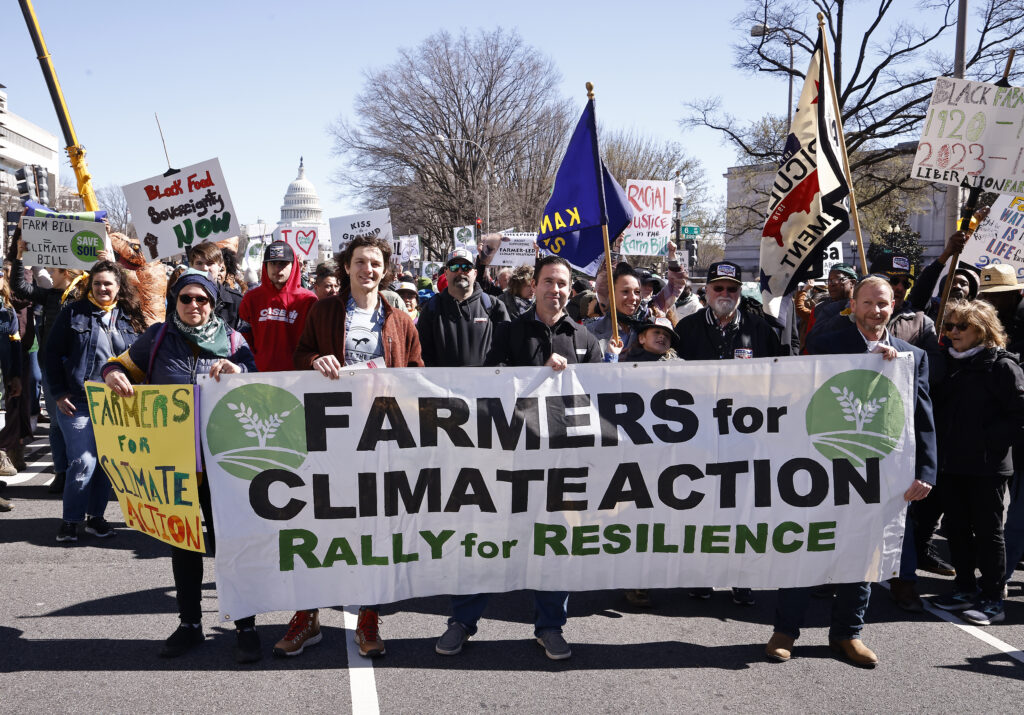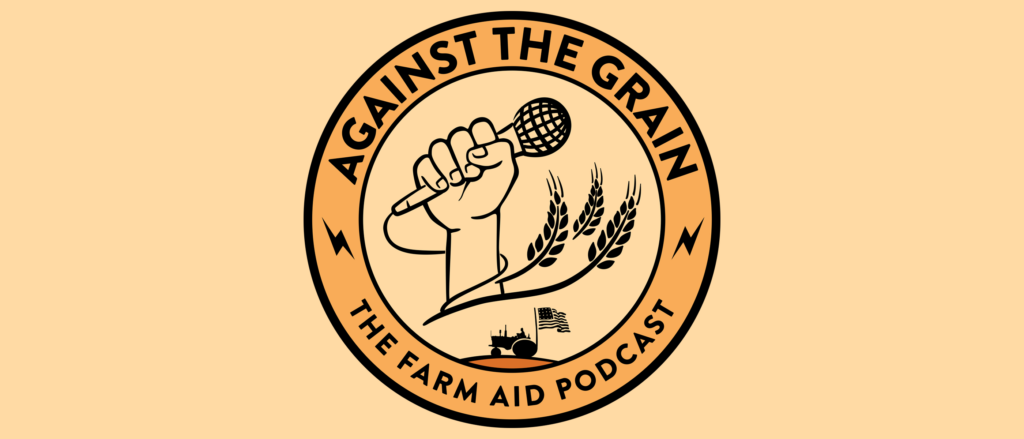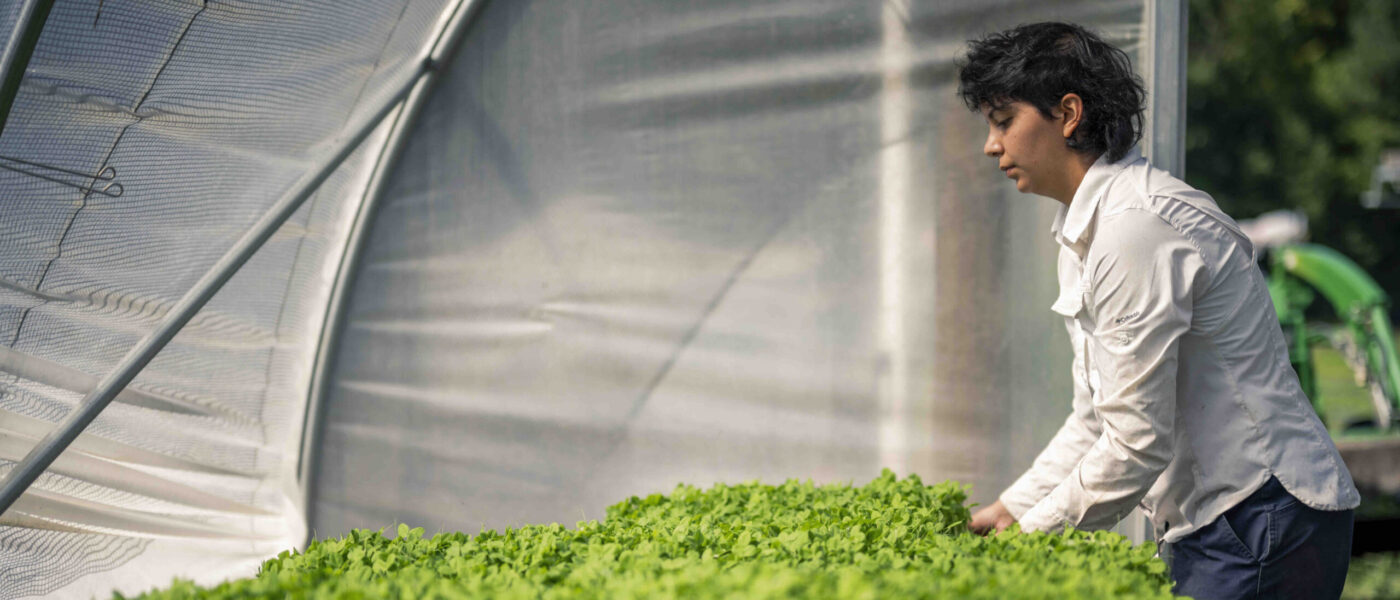Farm Aid’s mission is to build a vibrant, family farm-centered system of agriculture in America. Farm Aid artists and board members Willie Nelson, Neil Young, John Mellencamp, Dave Matthews and Margo Price host an annual festival to raise funds to support Farm Aid’s work with family farmers and to inspire people to choose family farm food. For nearly 40 years, Farm Aid, with the support of the artists who contribute their performances each year, has raised more than $80 million to support programs that help farmers thrive, expand the reach of the Good Food Movement, take action to change the dominant system of industrial agriculture and promote food from family farms.
Charity Watchdog Ratings
Charity watchdogs have established standards to measure the efficiency of how non-profits perform.
- Farm Aid earned a 4-star rating from Charity Navigator
- Farm Aid earned a ‘Top Rated’ ranking from American Institute of Philanthropy’s charitywatch.org
- Farm Aid earned a Gold Seal of Transparency from Candid
Financial Forms
- View Farm Aid’s 2023 IRS Form 990 here. You can also view previous 990 forms for 2022 and 2021.
- View Farm Aid’s independent audited financial statements for 2023 and 2022.
- Farm Aid is 501(c)(3) tax-exempt organization as defined by the IRS. The IRS requires that the organization benefit the general public for the purpose for which it was established. View Farm Aid’s IRS Letter of Determination and Form 1023 Exempt Status Application.
Farm Aid Activities for 2023
The following Farm Aid programs accomplished our mission in 2023:
Promoting Food from Family Farms
The heart of Farm Aid’s work to promote food from family farms is our annual Farm Aid festival. Farm Aid 2023 was held at Ruoff Music Center in Noblesville, Indiana, on September 23. A crowd of 22,209 enjoyed performances by Farm Aid Board members Willie Nelson, John Mellencamp, Neil Young, Dave Matthews with Tim Reynolds, and Margo Price. Additional artists included Bobby Weir & Wolf Bros, Allison Russell, Lukas Nelson & Promise of the Real, Nathaniel Rateliff & The Night Sweats, String Cheese Incident, Particle Kid, The Black Opry featuring Kyshona, Lori Rayne and Tylar Bryant, The Jim Irsay Band featuring Ann Wilson of Heart, Clayton Anderson, The Wisdom Indian Dancers and Native Pride Productions. Farm Aid 2023 also featured a surprise performance by Bob Dylan, backed by members of the Heartbreakers, as well as Sturgill Simpson, who joined Margo Price’s set. All of the artists generously donated their time and travel expenses.
On September 23 at Farm Aid 2023:
- 35 farm and food organizations engaged festivalgoers in hands-on, interactive activities about family farmers, soil, water and food production in Farm Aid’s HOMEGROWN Village. At the Mini Farm, festivalgoers enjoyed a rotational grazing demonstration by local sheep. In the HOMEGROWN Skills Tent, festivalgoers took part in workshops about distilling essential oils, growing cover crops, regional grain production, toolmaking, wool processing and spinning, making natural dyes, seed saving and more. On the Farmyard Stage, farmers, activists and artists came together in conversation about the benefits of crop diversity, agriculture’s promise as a remedy for climate change, the Farm Bill, and the next generation of farmers. Engaging people in a hands-on way in the HOMEGROWN Village and on the Farmyard Stage fosters deep awareness of key food and farm issues.
- Farm Aid partnered with Legends Hospitality to serve HOMEGROWN Concessions®: family farm-sourced food grown and raised with ecological standards and a fair price paid to farmers. HOMEGROWN Concessions® builds a strong relationship with farmers, food companies, ethnically diverse food vendors and sponsors. More than fifty menu items featured family farm food, including vegetable, fruit, dairy and meat ingredients from Indiana.
- Many food companies and sponsors donated food for HOMEGROWN Catering backstage and in VIP areas. Chefs volunteered to serve their specialties for guests.
- The HOMEGROWN Youthmarket, a farm-fresh stand operated by local young people from local chapters of The Grange and FFA, as well as the Human Agriculture Cooperative, sold local apples, pears, grapes, paw paws and pecans to festivalgoers.
- 60 cubic yards of food and serviceware waste was collected to make compost and build soil for future crops. Farm Aid had a total of 454 volunteers, many of whom helped festivalgoers differentiate between landfill-bound trash, recyclables and compostables.
- Farm Aid sold reusable water bottles to reduce waste, and aluminum water bottles were sold at concessions stands with free water refills. Farm Aid’s festival t-shirts were made with certified organic cotton.
- Farm Aid partnered with Second Helpings for the donation of nearly 15,000 pounds of grocery items and usable food remaining after the event, which was used to prepare nutritious meals for hungry children and adults in Greater Indianapolis.
- Photos of Indiana farmers and farms served as the backdrop for the music on stage all day. Photographer Scott Streble, who volunteers for Farm Aid each year, traveled across the state to document the farmers on their farms. In addition to adding to the messaging of the Farm Aid festival and literally putting farmers center-stage, the process of documenting farmers demonstrates to them how much their work is appreciated and valued.
- At Indianapolis International Airport, a Farm Aid exhibit and live music from The Black Opry greeted visitors flying in for Farm Aid 2023.
- Corporate sponsors included Hard Truth Distilling Company, Patagonia Workwear, Spindrift, Frontier Co-Op and Pete and Gerry’s Organic Eggs. Farm Aid 2023 generated several major donations as well as individual gifts, including a $1 million donation made on stage by Indiana’s Jim Irsay.
Farm Aid 2023 shined a spotlight on the essential role of farmers to help solve our climate crisis through innovative methods that sequester carbon and build soil health. Additionally, Farm Aid 2023 emphasized the diversity of farmers and ranchers in Indiana and across the nation. Over the summer, Farm Aid staff visited farms across the state to film videos that brought farmer voices to the Farm Aid stage, TV and web broadcasts, and our website and social media. Featured farmers joined Farm Aid board artists on stage for the annual press event that kicks off each festival, sharing their stories and the ways in which they act as climate stewards on their farms and contribute to the diversity of agriculture that makes it strong.
Farm Aid 2023 received significant local and regional media coverage, as well as national attention, including from The Associated Press, USA Today, The Indianapolis Star, Indianapolis Business Journal, PEOPLE, MSN Entertainment, Forbes, New York Post, Rolling Stone and Billboard. Coverage resulted in 748 print, online and broadcast media hits and 364 broadcast hits, resulting in 2.4 million media impressions from announcement day through festival-week. Feature stories touted the entertainment value of the festival, as well as the impact of farmers on climate change mitigation, and the importance of family farm agriculture for all of us. Local TV crews came out to the pre-events that were held before the festival, including farm tours and an all-day forum.
Farm Aid 2023 was broadcast live on Circle TV, a music-centric network, for the third time, with Farm Aid’s farmer stories and a call-to-action for donations and merchandise sales. SiriusXM satellite radio broadcast the entire concert live, with artists, family farmers and advocates interviewed between music sets.
The festival was webcast live on www.farmaid.org and Farm Aid’s YouTube channel, with 143,000 views and a total watch time of 87,000 hours, with more than 4,500 chat messages shared during the webcast.
The Farm Aid 2023 app for iPhone and Android provided festival details including the music lineup, stories about featured farmers, information about exhibits in the HOMEGROWN Village and the organizations presenting them, and the menu for HOMEGROWN Concessions®. The Farm Aid 2023 app was used by 10,156 people who logged 78,619 sessions with an average session time of just under 6 minutes.
Farm Aid’s social media presence allowed people to share how they support family farmers and Farm Aid, reaching 3.9 million users on X (formerly known as Twitter), resulting in 6.7 million impressions, and reaching 4.5 million more people on Facebook and Instagram, during the period between announcement and festival day.
Farmer Programming at Farm Aid 2023
Farm Aid held pre-festival events with farmers and farm advocates as the primary audience on Thursday and Friday before Farm Aid 2023. On Thursday, Farm Aid hosted two farm tours; one highlighted organic and regenerative agriculture with participation of three Indiana farms, and the other highlighted urban agriculture and the next generation of farmers with participation of four different Indiana farms. We also presented our first annual Farm Aid PPOLs (People Powered Organizing and Leadership) Award to the Campaign for Family Farms and the Environment. Our hope is to recognize and honor our community organizers each year who work so diligently and relentlessly on the ground to make change.
On Friday morning, our Farmer Forum shined a spotlight on a diversity of Indiana farmers and rooted the day in the culture of Indiana agriculture. Farmers in Indiana told us there’s a common narrative that says that Black, Native and people of color, women and small farmers don’t exist there. Our farmer speakers attested that this simply is not true. The forum explored how this false narrative relates to “climate,” in terms of the agricultural climate that relies on isolation and invisibilization in order for “big ag” to thrive, as well as the need for a variety of diverse, collective voices and practices to address climate change head-on.
In the afternoon, Farm Aid hosted The People’s Hearing, with farmers, advocates, organizers and authors from Indiana and across the country offering “testimony” to drive effective agricultural policy to address corporate power, climate change and racial justice. The format for the event drew from the tradition of civil rights movements that use the organizing principle of “Nothing About Us, Without Us, is For Us!” It came out of a feeling expressed by many farmers and farm groups that despite months of organizing and advocating in D.C. and asking legislators for a food system that prioritizes people and communities over corporate interests, Congress was not hearing their calls for a better Farm Bill. During the hearing, fourteen witnesses provided testimony on issues ranging from the inequity of current agricultural policy, to the need for a Farm Bill that supports regenerative, local food systems and farmer-led climate solutions, and the critical importance of preventing development of agricultural land.
An esteemed “jury” listened to the testimony and presented a discussion on the themes and takeaways they observed. Finally, Gloria Montaño Greene, Deputy Undersecretary of Farm Production and Conservation Division at the United States Department of Agriculture (USDA), responded to the day’s testimony, which was also heard by other USDA staff. Audience members were able to submit comments that were included in written testimony delivered to the Deputy Undersecretary.
Due to the voting calendar, members of Congress who had hoped to attend were not able to, but Senator Cory Booker (D-NJ) later asked that Farm Aid coordinate a second People’s Hearing on Capitol Hill for Congress members and staffers.
Our Year-Round Online Community
Farm Aid’s website informs and inspires the public through storytelling about America’s innovative family farmers, the challenges they face and the solutions they hold. In addition, it offers resources directly to farmers and shows readers how they can support family farmers every day in their own lives. FarmAid.org offers timely news and opportunities to engage in food and farm issues. In 2023, there were more than 825,000 visits to www.farmaid.org by 581,000 users.
Farm Aid communicated with our audience of more than 96,000 email subscribers and reached millions of people on on Facebook, Twitter, Instagram and YouTube. The number of followers on these networks at the end of 2023 were: 156,000 followers on Facebook (with our post reach increasing by 254% over the previous year), 37,000 on X, 5,000 on Threads, 46,000 on Instagram, and 629,000 on YouTube. Farm Aid’s YouTube channel features more than 2,500 videos, with 494 million lifetime views.
In October, Farm Aid launched a podcast, Against the Grain, which brings the magic of Farm Aid’s annual festival to listeners year-round. Hosts Jessica Ilyse Kurn and Michael Stewart Foley interview farmers, artists, advocates, food experts, activists and policymakers who fight industrial agriculture giants, hold government accountable, and shift culture towards a food and farm model that is better for farmers, our soil, water and climate, and for all of us. In 2023, two episodes and a special bonus episode were released, each introducing farming and food topics that will be explored in depth in subsequent seasons.
In 2023, Farm Aid’s volunteer coordinator established a dedicated email newsletter for the large community of Farm Aid volunteers. Additionally, Farm Aid expanded its video production capacity in 2023, bringing farmer stories to the screen not just during festival season but throughout the year.
Farm Aid’s Cultural Impact
Farm Aid was invited by Live Nation to make a presentation about Farm Aid and our sustainability efforts at one of their annual meetings, which included 150 Live Nation venue managers, as well as food and beverage managers from Live Nation and Legends Hospitality.
Towards the end of the touring season, Live Nation and Farm Aid launched a pilot program to include a HOMEGROWN Concessions® menu item in the offerings of three amphitheaters (Atlanta, Raleigh and Indianapolis). The program will expand in 2024.
Neil Young invited Farm Aid to help “green” his summer Coastal Tour. The HOMEGROWN Concessions® team worked with each venue on the tour to source non-factory farm meats and proteins, non-GMO ingredients and sustainable produce; to replace soda with other options, including local beer and wine; and to replace single use plastics with compostable and recyclable serviceware. Farm Aid is working to do the same on Neil’s May 2024 tour.
Farm Aid continues to work to inventory and digitize its video, audio and photo libraries with the intention of creating an archive that will preserve the assets of Farm Aid and offer long-term opportunities for Farm Aid’s continued cultural impact.
In March, Farm Aid was invited to participate in the Mellencamp Symposium at Indiana University. The one-day event explored the art and advocacy of John Mellencamp and included his work with Farm Aid and other social justice causes.
In May, the Lyndon B. Johnson Foundation honored Willie Nelson with the LBJ Liberty and Justice for All Award. Willie’s work with farmers via Farm Aid was recognized in the honor. Also in May, the State of Oklahoma honored the work of farm advocate Mona Lee Brock, as well as the work of Farm Aid.
Farm Advocate, attorney and author Sarah Vogel asked Willie Nelson to write the foreword for the paperback edition of her memoir (published in September), The Farmer’s Lawyer, which shares the story of her work as attorney on behalf of hundreds of family farmers suing the USDA in a class action lawsuit.
Growing the Good Food Movement
In 2023, Farm Aid and our partners continued to implement strategies that bolster the Good Food Movement—the growing number of eaters demanding family farm-identified, local, organic or humanely raised food. Farm Aid awarded grants in the amount of $135,000 to organizations that strengthen infrastructure for local and regional food systems and raise awareness of their value. These grants supported work to create new markets for farmers and enhance access to good food for everyone, regardless of race, color, national origin or zip code.
Helping Farmers Thrive
While farm income held steady in 2023, farm input costs continued to rise, putting many farmers on a razor-sharp edge. In addition, farmers faced the constant challenges of competing in an ever-consolidating market that favors corporations; trying to earn a fair price in unfair markets; and enduring extreme weather and natural disasters exacerbated by climate change. The strain in the farm economy is no accident; it is the result of policies designed to enrich corporations at the expense of farmers, ranchers and eaters. In response, Farm Aid continued to expand our direct farmer response and increased our advocacy of solutions to farm policy that needs a massive shift in direction—one that is equitable to all farmers and delivers fair prices and competitive markets that allow farmers to make a living.
Through the 1-800-FARM-AID Hotline and Online Request for Assistance, Farm Aid’s Hotline Operators listen to farmers and refer them to an extensive network of farm and rural support organizations across the country. Referrals provide immediate support to farm families in crisis and farmers seeking to transition to more sustainable farming practices, as well as to people interested in establishing farm businesses. In 2023, Farm Aid received 719 contacts to the Hotline and Online Request for Assistance form, 26 of which were Spanish language requests. Farm Aid received the highest number of farmer inquiries from California (62), North Carolina (39), Indiana (36) and Texas (36).

Farm Aid’s Farmer Services Team
In partnership with the Migrant Clinicians Network, Farm Aid’s hotline assisted Spanish-speaking hotline callers via Spanish-language assistance. Farm Aid remains engaged in several marketing and outreach strategies to increase knowledge and create partnerships with Spanish and farmworker organizations. To mark Mental Health Awareness Month in May, Farm Aid engaged in a podcast tour, completing 17 interviews on podcasts with audiences of farmers and farmworkers. The interviews were intended to spread the word about the stressors that farmers and farmworkers face, how the Farm Aid hotline can help, and especially to highlight the Spanish-language capacity of the hotline.
In 2023, emergency grants totaling more than $41,500 were made to farm families to cover essential household expenses. These $500 grants are recommended on a case-by-case basis by hotline operators who also connect farmers with helpful services, resources and opportunities specific to their individual needs.
Farm Aid’s Farmer Resource Network (FRN) offers an interactive website and database of more than 730 resources that provide guidance for new farmers, direct assistance to farmers in crisis, and support for farmers who wish to transition to more sustainable production methods and markets. Through the FRN, Farm Aid makes connections between individuals, farm service organizations, and businesses to address challenges and create opportunities for farmers. Farm Aid points farmers and advocates to our most trusted resources, new offerings and timely opportunities via our curated Resource Guides. In 2023, the entire Farmer Resource Network was translated to Spanish, to make it accessible to Spanish-speaking farmers and farmworkers.
Farm Aid continues to be part of the Farm and Ranch Stress Assistance Network (FRSAN) via our deep work with the Northeast and Western regions of that federally funded program; additionally, in 2023 Farm Aid became a contractor of the Southern region of FRSAN.
In May, Farm Aid presented at the USDA’s Mental Health Awareness event titled Farm Stress and Suicide Prevention: Data, Challenges, and Opportunities, as well as at USDA’s convening Prosperity & Sustainable Livelihoods: Suicide in Farming Communities. Farm Aid staff presented and represented at many other conferences and gatherings including Faithlands Conference, National Agribility Conference, Marbleseed, National Ag Extension Agents Conference, Food Forum, EcoFarm, Rural Coalition, PASA, Indiana Small Farm Conference, The Black Loam Conference, the Latino Farmers Conference, and the World Farmers Market Coalition Meeting. Throughout the year, Farm Aid operators and Farmer Services team members completed training in agricultural topics like land trusts and agricultural mediation and mental health topics like ambiguous loss.
Farm Aid awarded $464,500 in End of Year grants to organizations that help farmers secure the resources they need to begin farming, access new markets, grow sustainably and build resilience in the face of crisis and stress.
Taking Action to Change the System
Farm Aid works with local, regional and national organizations to promote fair farm policies and grassroots organizing efforts. Farm Aid granted $357,500 to family farm organizations working to ensure competitive markets for family farmers, address antitrust and contract violations, fight factory farms, strengthen the grassroots around a unified vision for our farm and food system, and amplify farmer voices to reform the food system.
In early 2023, Farm Aid re-launched our Farm Bill 101 to engage farmers and eaters in the long process to a new Farm Bill, which was intended to be passed before the expiration of the existing bill in September 2023. In March, Farm Aid co-organized a three-day “Rally for Resilience” with National Sustainable Agriculture Coalition (NSAC) in Washington D.C., with more than 400 farmers and advocates rallying and marching for a climate resilient Farm Bill. Farm Aid board member John Mellencamp joined the rally, performing and speaking out with farmers, and Willie Nelson (accompanied by Micah Nelson and Mickey Raphael) shared a recorded video message of support. As the rally concluded, participants took to the streets, marching from Freedom Plaza to Capitol Hill to call on members of Congress to ensure that farmer-led climate solutions, racial justice and communities—not corporations—are represented in the 2023 Farm Bill. The next day, farmers from across the U.S. met with members of Congress to press for a climate resilient Farm Bill.

Farmers and activists march to the U.S. Capitol after the Farmers for Climate Action: Rally for Resilience (Photo by Paul Morigi/Getty Images for National Sustainable Agriculture Coalition)
In May, Farm Aid hired a new Policy and Advocacy Manager, increasing Farm Aid’s knowledge, skills and capacity to do policy work and engage our audience in advocacy.
In September, Farm Aid hosted The People’s Hearing on the Farm Bill before the annual festival to call for a farm bill that prioritizes climate resilience, racial equity and access to healthful food and clear water, air and soil. Speakers at the event included farmers, advocates, authors and organizers hailing from all over the country and representing longtime organizational partners of Farm Aid as well as new partners from the festival region. In November, Senator Cory Booker reached out to ask Farm Aid to produce a similar event virtually, which he hosted, to brief Congressional members and staffers on the importance of the Farm Bill and farmers’ priorities for it. Because Congress failed to pass a new Farm Bill in 2023, these efforts will continue into 2024.
Throughout the year, Farm Aid signed onto letters and endorsed legislation that supports Farm Aid’s policy priorities in the next farm bill. Farm Aid lent our voice and other support to efforts to change our farm and food system, including:
- Strengthening the Packers and Stockyards Act, to increase transparency and fairness in contracts with livestock farmers and poultry growers;
- Increasing agricultural competition and enforcement of antitrust laws;
- Supporting beginning and socially disadvantaged farmer and rancher programs and endorsing student loan forgiveness for young farmers;
- Protecting climate funding in the Inflation Reduction Act of 2022;
- Expanding small-farm access to conservation programs and increasing funding for organic research;
- Ending discrimination within USDA, protecting remaining Black farmers from losing their land, and providing land grants to encourage a new generation of Black farmers and restore the land base that has been lost;
- Standing with farmworkers and food chain workers to increase workplace safety and health protections;
- Reforming farm credit to improve access and accountability, and improving crop insurance programs;
- Supporting critical investments in rural economies across the country by supporting small farmers and ranchers directly;
- Speaking out against federal funding for confined animal feeding operations (CAFOs) and manure digesters that create factory farm gas and attempt to greenwash factory farming;
- And calling on President Biden to demand a transformative Farm Bill that centers racial justice, ends hunger and increases access to healthy food, meets the climate crisis head on and ensures the safety of food and farm workers, farmers and consumers, and our entire food system.
Additionally, Farm Aid created content and opportunities to inform and engage our online community. These included initiatives around the protection of conservation funding for farmers, federal food purchasing standards, strengthening federal support for young farmers and supporting climate resilient agriculture.
Finally, throughout the year, Farm Aid supported the critical work of the USDA Equity Commission via the participation of Farm Aid’s Program Director Shorlette Ammons. The Committee was established to advise the Secretary of Agriculture and provide USDA with an analysis of how its programs, policies, systems, structures and practices contribute to systemic discrimination and lack of access and inclusion, or exacerbate or perpetuate racial, economic, health and social disparities. The Committee presented its recommendations for action in February.
Farm Aid’s credit working group, made up of people directly serving farmers through one-on-one advocacy in addition to experts in farm credit and agricultural law, continued to offer and press for reforms that can be made administratively at USDA. The working group meets weekly and joins regularly with top USDA officials to push for changes that make USDA programs and credit more accessible to farmers, especially underserved farmers, with better outcomes for family farmers.
Farm Aid continues to serve as a leader and contributing member of various collaborative efforts to change our farm and food system and advance the power and participation of farmers in these efforts. These include efforts to address economic and social injustices across animal agriculture; to elevate on-the-ground solutions to climate change; to build the supply of non-GMO food ingredients and animal feed in the U.S.; and to promote regenerative agriculture.
Other Granting and Total Granting
In response to natural disasters, Farm Aid made multiple grants through its Family Farm Disaster Fund totaling $120,000. 2023 saw record historic floods in the Northeast and California. Disaster grants also continued to support farmers in the South experiencing crisis from hurricanes in late 2022.
Strategic grants totaling $194,500 enabled long-term Farm Aid partners to address pressing needs or take advantage of unique opportunities to advance family farm agriculture. For example, grants supported Rural Advancement Foundation International-USA (RAFI) in their work to preserve the work of Farm Advocates, by codifying the work of farm advocates like Benny Bunting and training the next generation of advocates. Another strategic grant supported the Land Stewardship Project in Minnesota to support community members organizing in Winona County against a large-scale dairy factory farm. Another grant supported the publication and open access of Empty Fields, Empty Promises: A State-by-State Guide to Transforming Right-to-Farm Laws.
$22,914 in farmer leadership grants supported farmer participation in leadership trainings, policy advocacy and other gatherings where farmer perspectives and knowledge are essential to tackle some of our nation’s biggest challenges.
Farm Aid’s Agricultural Scholarship Fund, established by Younkers Department Store in 1985, granted ~$20,000 in agricultural-related scholarships to students at three universities during 2023.
In total, Farm Aid made grants in the amount of $1,354,312 during 2023. Farm Aid prioritized grant proposals from organizations that facilitate farmer-led solutions to climate change, fight industrial and corporate power in agriculture, support family farmers experiencing crisis and farm stress, and advance racial equity and systemic change in our farm and food system.
Farm Aid also continues its leadership in the philanthropic community to bring funders’ attention to the varied challenges faced by family farmers and to encourage collaboration and collective problem solving. Additionally, Farm Aid established a framework to better align our grantmaking approach with justice-based principles, including trust-based philanthropy and “a just transition.”
Management & Development
Farm Aid is fortunate to be in a stable financial position, due to several years of extraordinary support from our Board and festival artists, donors and Farm Aid fans. The annual festival continues to be the organization’s primary source of revenue. Additionally, Farm Aid benefits from generous foundation and corporate support, particularly for our farmer services work and FRSAN engagement, for which we receive USDA funding that has enabled expansion of our capacity for outreach, advocacy and direct services for farmers and farm service providers.
Farm Aid continued to strengthen our organizational capacity in 2023. We added several new positions, including hiring full-time staff for the roles of Policy & Advocacy Manager and Operations & Development Coordinator. We increased the hours of our Grant Program Manager from 80% FTE to full-time and filled out our team of Farmer Hotline Operators. At the end of the year, Farm Aid’s staff comprised 20 people, including 17 full-time and 3 part-time employees. We continue to contract out accounting and technology support and plan to make additional hires in 2024 to build out our in-house finance team. Additionally, Farm Aid engaged an external management consultancy to focus on strategic organizational growth and development and ensure that our efforts and practices are equity centered.
Farm Aid depends on the generous support of people from diverse communities across the country, from urban cities to rural countryside. We strive to authentically engage, nurture and grow this grassroots donor base as we work together to cultivate a vibrant family farm-centered system of agriculture that benefits all of us. To that end, our fundraising philosophy continues to reflect the spirit and values of the organization and its founder and president, Willie Nelson.
In March of 2023, we returned to Willie and Annie Nelson’s Luck Ranch outside Austin, TX, for the annual PotLuck dinner and Luck Reunion festival. We were grateful to be one of three non-profit beneficiaries to share proceeds from the dinner, with additional revenue raised through a silent auction of memorabilia. At the Luck Reunion, Farm Aid moderated a panel discussion featuring inspiring solution-builders from marginalized communities who spoke of their work to confront disparities across our food and agriculture systems.

Willie Nelson performs with Micah Nelson at Luck Ranch on March 16, 2023. Photo © Suzanne Cordeiro
A key part of Farm Aid’s fundraising approach is to build and expand upon the success of previous campaigns while seeking new opportunities. We continue to generate contributed revenue through partnerships with Soundwaves Art Foundation and Fandiem, an online sweepstakes platform where fans entered to win a VIP experience to the Farm Aid festival. We formed a new partnership with Plus1, which came about when Tanya Tucker offered to donate $1 per ticket sold for her 2023 tour. Now we can use that platform to offer other Farm Aid artists similar opportunities.
In a new initiative, Farm Aid partnered with Target Circle’s “Community Giving Program,” which encourages members in markets across the country to cast votes that direct charitable giving to participating organizations. To date, consumers that participate in this membership program have directed more than $90,000 to Farm Aid.
The Farm Aid festival provides critical opportunities for fundraising, including through our VIP Experience program, which saw a 5% increase in the number of tickets sold compared to 2022, generating nearly $500,000 in ticket sales. Other festival fundraising efforts generated a slight increase over 2022, which was especially successful given that 2022 saw an amazing 213% increase in funds raised over the prior year. Our annual festival auctions played a critical role in maintaining that growth, realizing more than $90,000 in revenue – a 45% increase over 2022. The success of these auctions would not be possible without the generosity of valued partners like the American Fundraising Foundation, which facilitates our exclusive travel experiences, the Gibson Foundation, which donates guitars year after year, and especially of the Farm Aid artists who take the time to sign the items included in the memorabilia auction.
Our end of year giving campaign began on Giving Tuesday and ran through year-end. During that period, we raised nearly $210,000 from our dedicated donor community, sustaining the record median and average gift amounts that were achieved in 2022.
We continue to be inspired and thankful for all those who support family farmers through a donation to Farm Aid, as well as those who directly support family farmers in their own communities in many ways.


